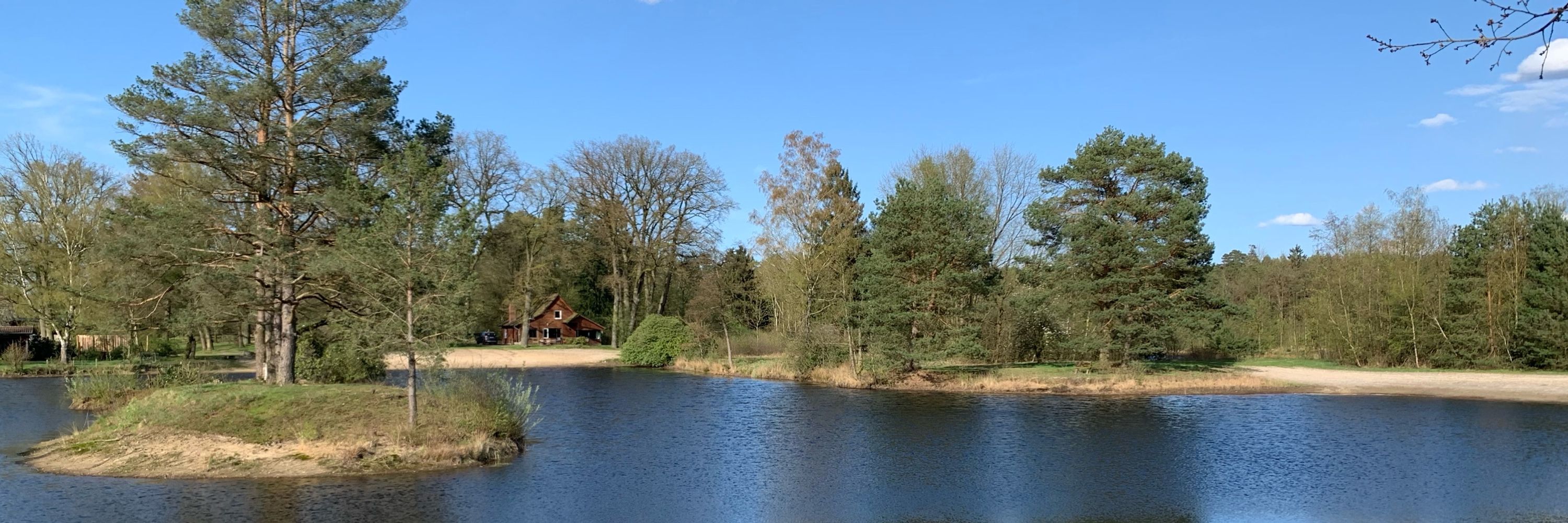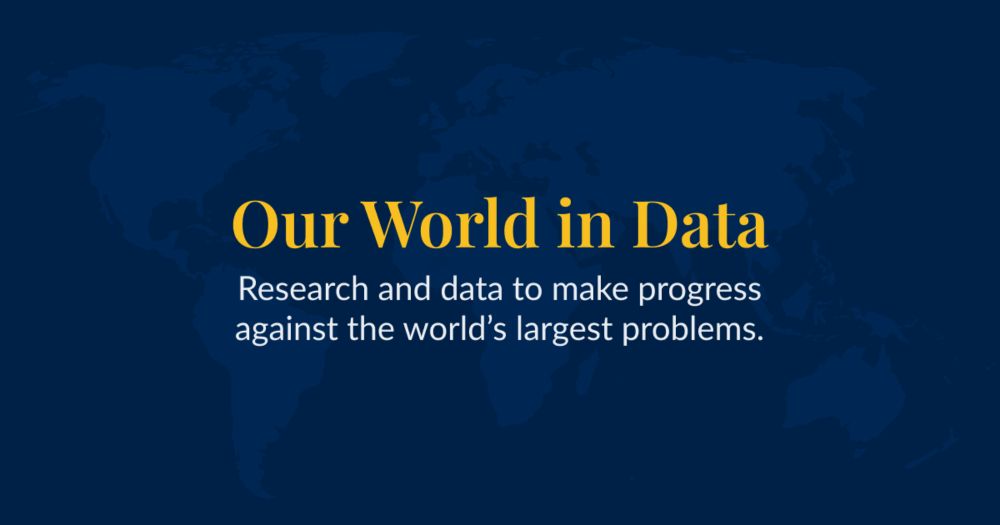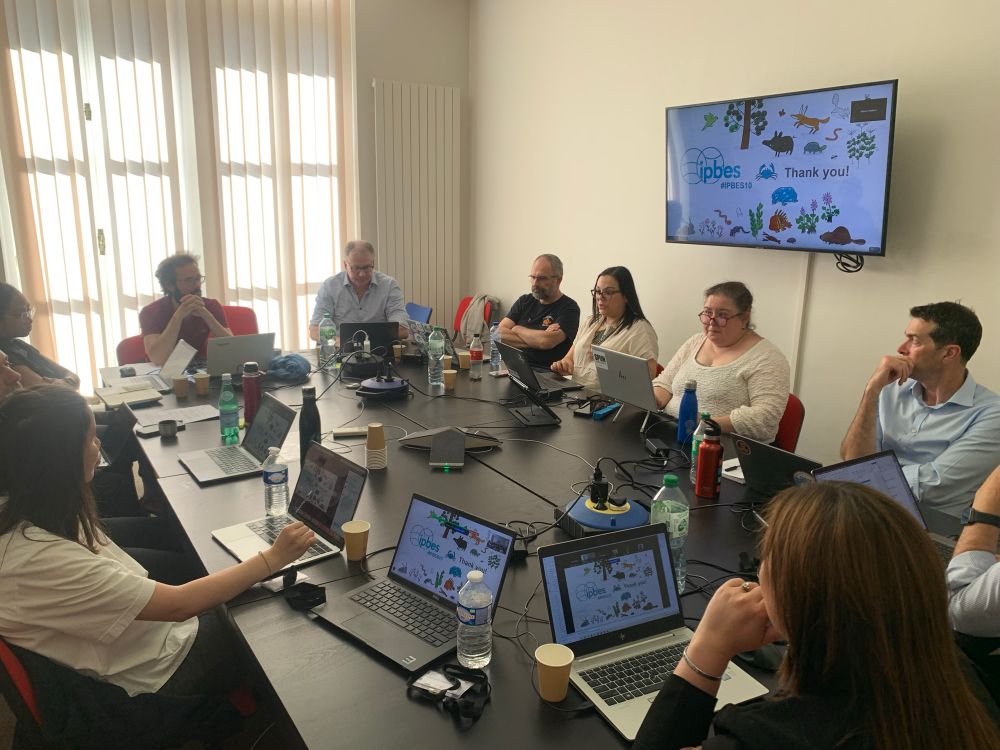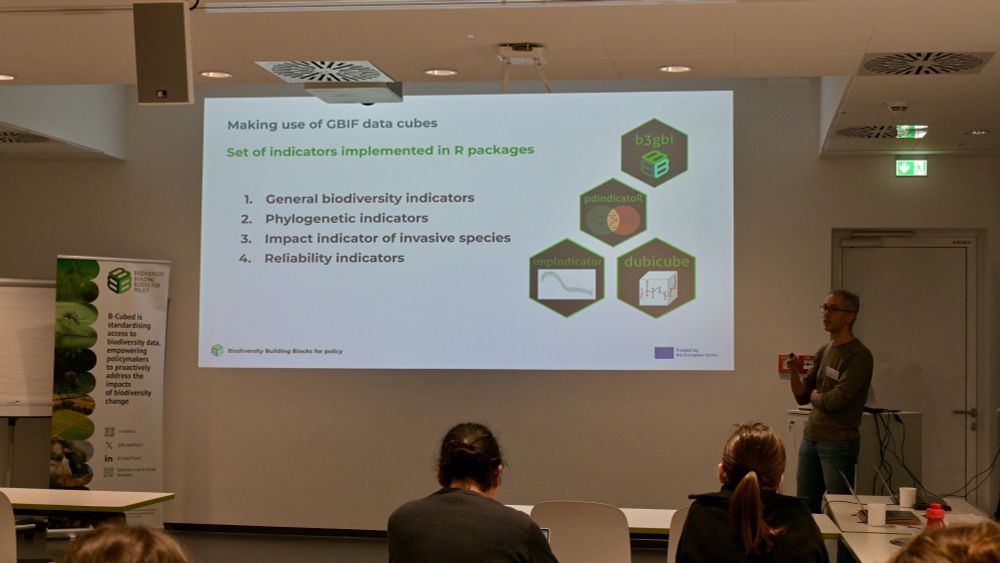
Ecologist working on biodiversity, biological invasions (invasive species) using computer models and data stuff. Also science-policy, IPBES and indicators.
https://www.uni-giessen.de/en/faculties/f08/departments/tsz/wilke/people/hanno_seebens ..
more
Ecologist working on biodiversity, biological invasions (invasive species) using computer models and data stuff. Also science-policy, IPBES and indicators.
https://www.uni-giessen.de/en/faculties/f08/departments/tsz/wilke/people/hanno_seebens
Reposted by Hanno Seebens


Amazing to see what has been done in Colombia for harmonising and providing biodiversity.
Next stop #LivingData2025 conference starting tomorrow.
Ahead of #LivingData2025, the GBIF network has a packed schedule with our Global Nodes meeting and training, committee meetings and the 32nd GBIF Governing Board.
We're looking forward to connecting with new and familiar faces in #Colombia! 🌎
📷 Mélianie Raymond

Very excited to get in contact to a new community, to meet friends and colleagues and to learn new stuff and advancements on biodiversity data.🙂
Reposted by Quentin Groom, Hanno Seebens

Ahead of #LivingData2025, the GBIF network has a packed schedule with our Global Nodes meeting and training, committee meetings and the 32nd GBIF Governing Board.
We're looking forward to connecting with new and familiar faces in #Colombia! 🌎
📷 Mélianie Raymond
I know that this is not uncommon in science but it always sucks. We put quite some effort into this and it is such a nice one. Maybe next time.
Reposted by Hanno Seebens
@dylancraven.bsky.social Tiffany Knight @hannoseebens.bsky.social @patrickweigelt.bsky.social

Reposted by Anthony Ricciardi, Hanno Seebens

Reposted by Hanno Seebens

30th Sep 2025
14:00-17:00 BST
Food, Agriculture, and Forestry Workshop
events.teams.microsoft.com/event/3ed563...
20th Oct 2025
14:00-17:00pm BST
Finance Workshop
events.teams.microsoft.com/event/19c5c4...

A fantastic opportunity to exchange across sectors.
Many thanks for having me! I enjoyed it very much. 🙏
The whole author team was fun to work with.
The comprehensiveness of our assessment allows to provide a good overview of knowledge and lack of knowledge.
Non-native species are everywhere, even in remote places (islands, deep sea, Antarctica, high mountains).
Trends are increasing and will increase in the future.
Data gaps are huge. No inventory is complete. Particularly for invertebrates, aquatic species and invertebrates.

A new #publication with 65 authors from all continents (except Antarctica), 42 article pages and >500 references.
doi.org/10.1111/brv....
🌐 #ecology #globalchange

Led by @hannoseebens.bsky.social , L Meyerson, P Pyšek and D Richardson and ~60 other coauthors, and based on Chap2 of the #IAS #IPBES Report, it has all the basic info you need!
A MUST READ!
doi.org/10.1111/brv....




And the recent publication putting this data into context here: lnkd.in/eGr4w6kh

I realised that the famous data platform "Our World in Data" has now our data set of first records of alien species on their platform.
I use this platform quite a lot and I am very happy (and proud) to find our data set there as well 🤩
lnkd.in/ePJFEgFk

Reposted by Hanno Seebens
Come work with us in the Laboratory of Biological Invasions at the University of Concepción and the Institute of Ecology and Biodiversity @iebchile.bsky.social
Reposted by Hanno Seebens

The joint conference hosted by @tdwg.org, GBIF, @obis.org and @geobon.org at the #InstitutoHumboldt in Bogotá, #Colombia will bring together biodiversity networks from across the world. 🐸
www.livingdata2025.c...
#DatosVivos2025
@inbo.be 🌐
📌 Full details: www.gbif.org/news/5PapgYC...

A massive milestone of the @b-cubed.eu project
Check it out 👇
Reposted by Hanno Seebens


Access the packages 🌐 docs.b-cubed.eu/guides/b3ver...
Reposted by Hanno Seebens, Dmitry Schigel

@inbo.be 🌐
📌 Full details: www.gbif.org/news/5PapgYC...

